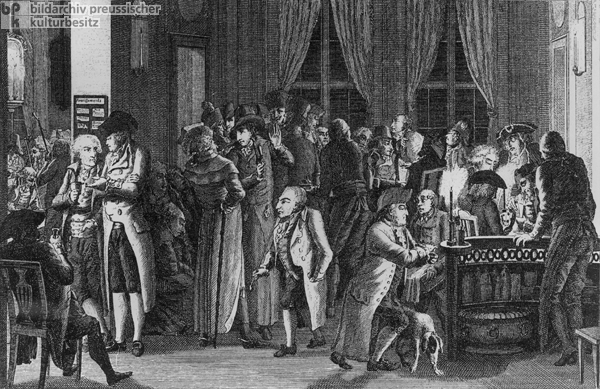|
Richter’s Coffee House in Leipzig (c. 1785)
Coffee houses were introduced to Europe in the seventeenth century by invading Ottoman Turks. Over time, they became centers of literary, intellectual, and political exchange. They were particularly important as places where men from the educated and commercial middle classes could mix among themselves and with urbane and intellectually-minded members of the landed and bureaucratic nobility. The Saxon metropolis of Leipzig, in which the coffeehouse depicted here stood, had a long and rich coffee tradition. The city was home to numerous coffee merchants and roasters, and it was also the site of Germany's first coffeehouses, which served as meeting places for the leading writers, composers, and politicians of the eighteenth century. Copperplate engraving by an unknown artist, c. 1785.

|


